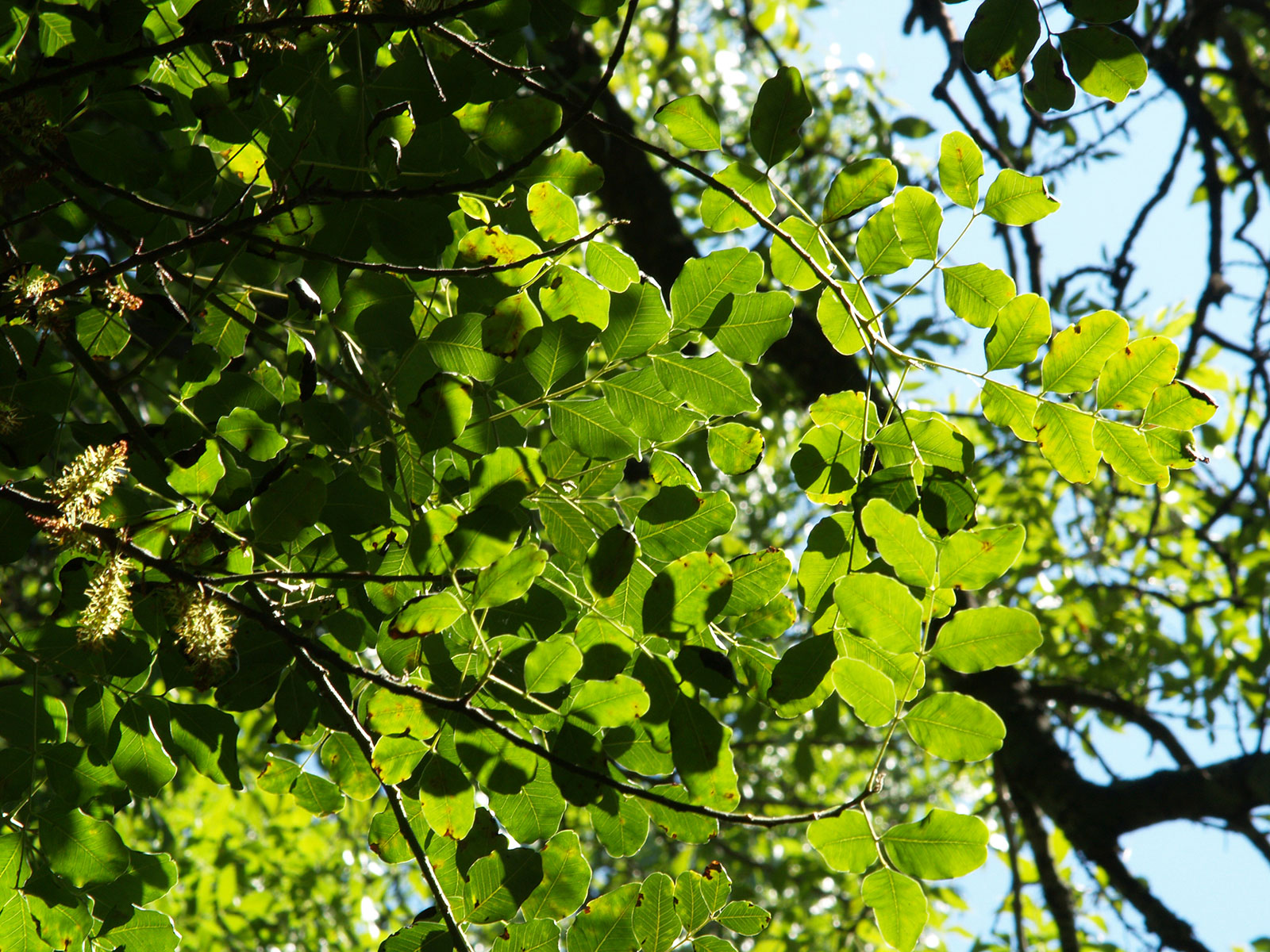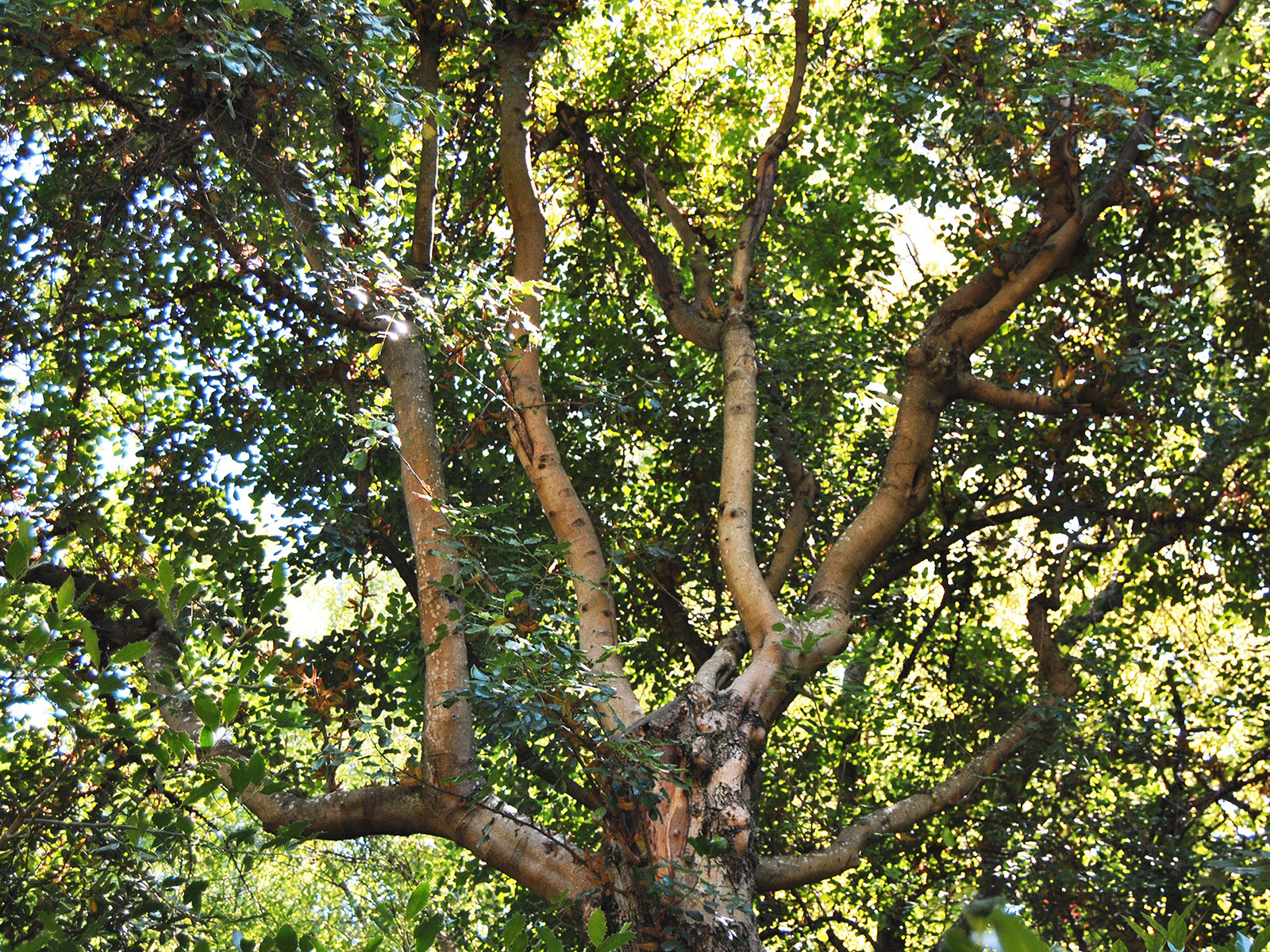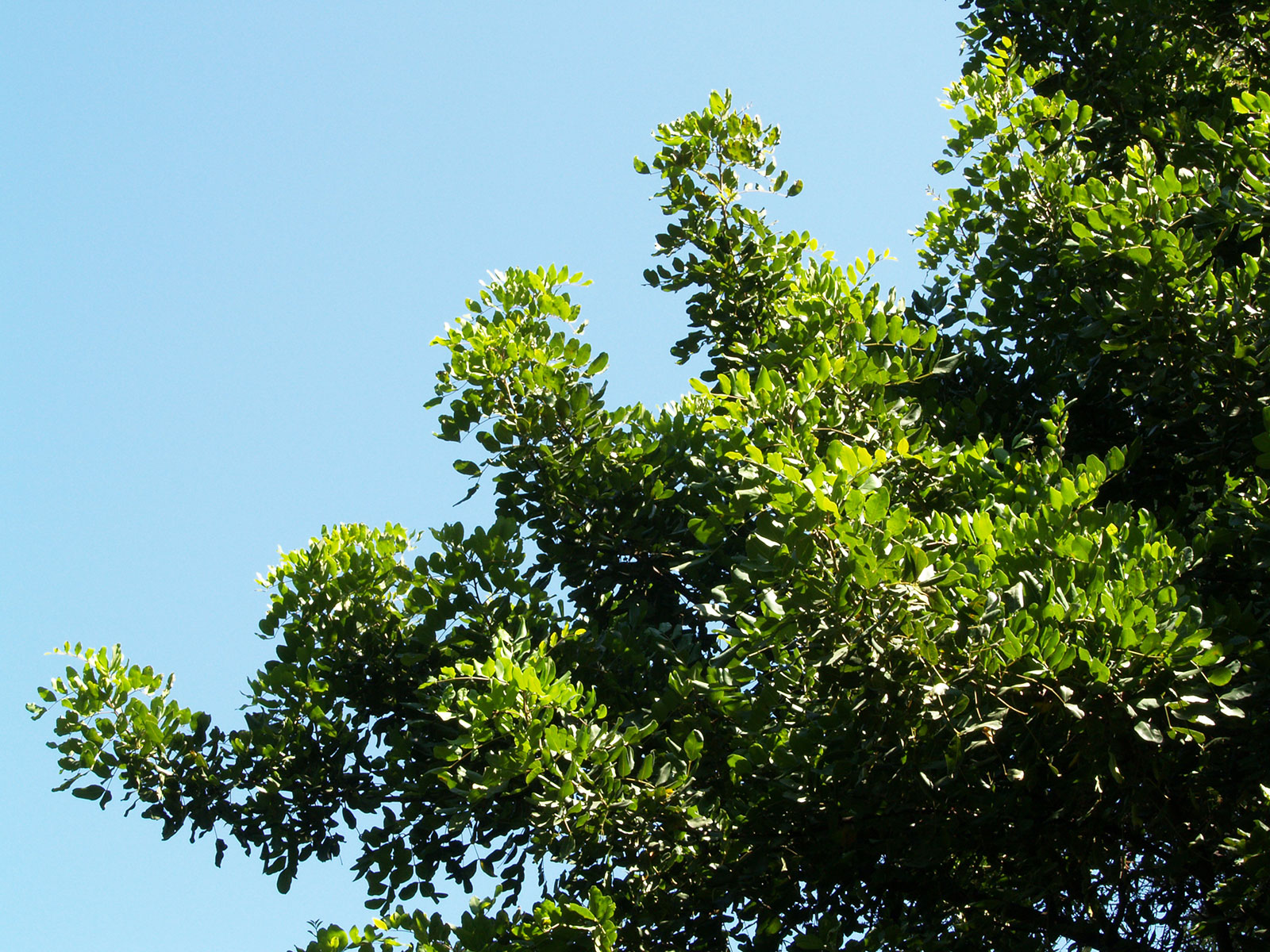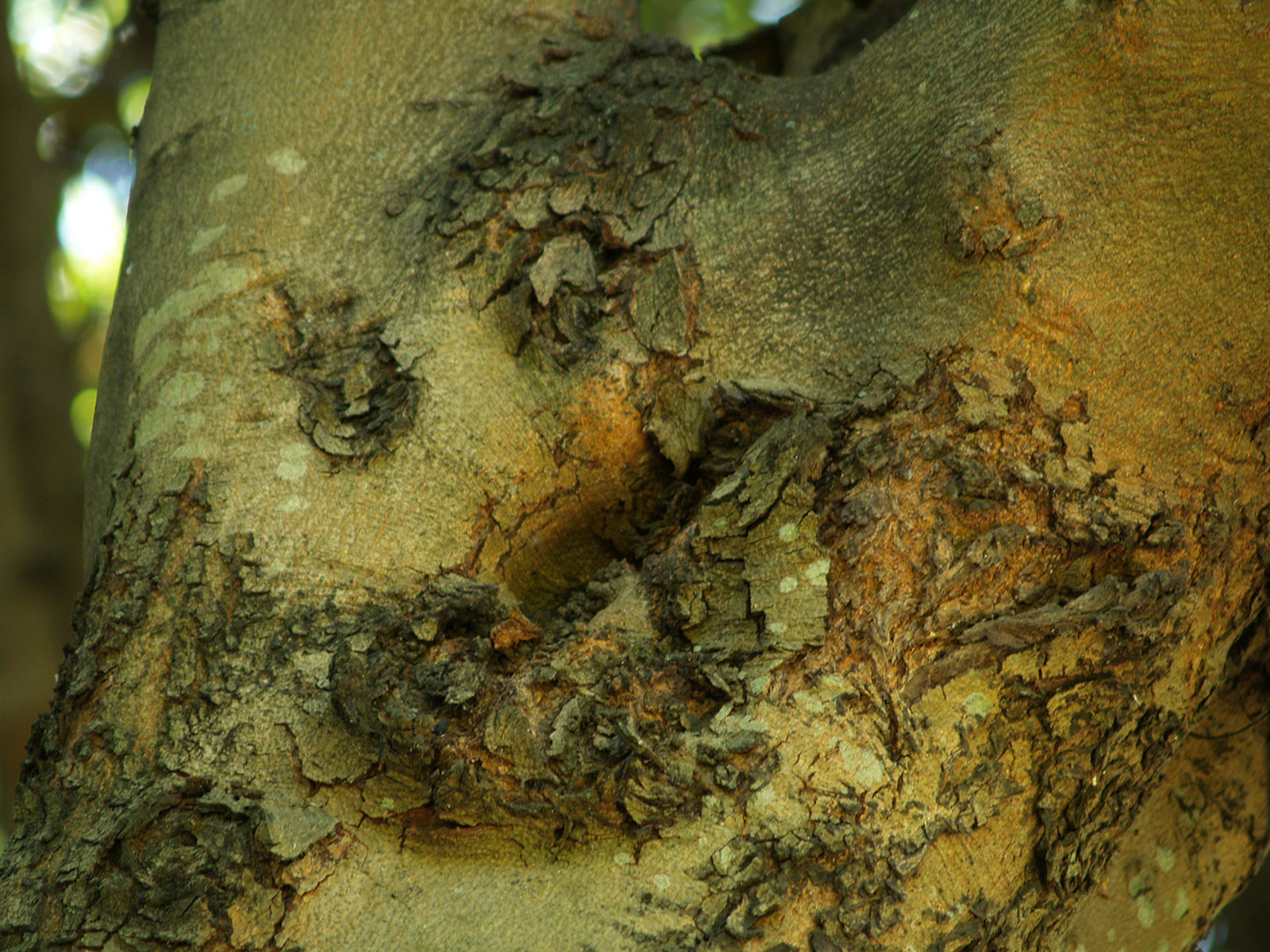
Carob Tree
Ceratonia siliqua
Family and description
From the Fabaceae family, the carob tree is a leafy leguminous tree that can reach a height of up to 10m.
Its canopy is oval with horizontal branches. The trunk is brown and irregular, of smooth bark with some protrusions.
The leaves are alternate, composed of 1 to 5 pairs of ovate and elliptical follicles, dark green and glossy on the upper part and a paler green on the lower part.
Flowering takes place between August and October. Its flowers are very small, without corolla and with a chalice formed by 5 greenish or reddish sepals; they form bunches that are born on the trunks and branches. Being a dioecious species, the flowers are usually unisexual, in both male and female trees.
The fruits are pods of about 10 to 25 cm in length and fleshy, which evolve from green to dark brown as they mature. They have in their interior 10 to 16 seeds known as carob beans.
Origin and habitat
The origin of its distribution is not known for certain because it has been a species of extensive cultivation for a long time in the Mediterranean.
Carob trees are spontaneous or sub-spontaneous trees in Mediterranean sclerophyllous scrubs with basic and stony soils. However they also tolerate sandy or clayey soils. They are found in warm regions with mild winters.
It is a species resistant to heat, drought and salinity but intolerant to flooding.
Uses and curiosities
It is cultivated in dry orchards (carob orchards) and is used for ornamental purposes in gardens. It reproduces by seed germination.
Carob beans, nutritious and tasty, have been used for centuries to feed livestock and in times of scarcity. In ancient times, the seeds were used as a unit of weight (carat) for precious materials (gold bars, diamonds, jewels, etc.).
It is currently used in human food because it has a sweet taste and is often used as a substitute for chocolate in confectionery.
The seed is also used for its gum which is extracted and used in various industries, namely in the food sector as a thickener, stabilizer and emulsifier or in the textile industry as a gelling agent for printing; in the manufacture of paper, glues and paints and in the pharmaceutical industry for the manufacture of capsules, toothpastes and cosmetics, among others.
It is a hard, dense wood used in the manufacture of various utensils.
The bark and leaves are rich in tannins and are therefore traditionally used in the tanning industry.


